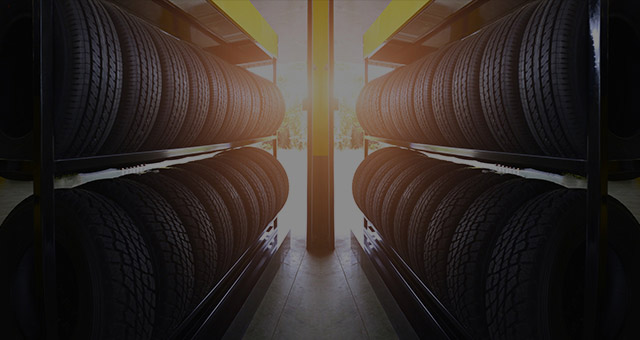Discover Top-Quality Tires Morris IL: Pick the most effective for Your Lorry
Discover Top-Quality Tires Morris IL: Pick the most effective for Your Lorry
Blog Article
Tire Service: Recognizing Tire Stress Monitoring Systems
Understanding Tire Pressure Tracking Equipments (TPMS) is a crucial element of preserving optimum lorry efficiency and safety on the roadway. With developments in vehicle modern technology, TPMS has become a typical feature in modern-day cars, providing real-time information on tire pressure levels.

Relevance of TPMS
The significance of Tire Pressure Monitoring Solutions (TPMS) depends on their capacity to boost automobile security and performance via real-time monitoring of tire stress degrees. Preserving the appropriate tire stress is critical for ensuring optimum handling, stopping, and overall safety and security of a lorry. TPMS offers chauffeurs with immediate responses on any type of underinflated or overinflated tires, allowing for timely changes to be made.
Parts of TPMS
Consisting of different essential aspects, a Tire Stress Surveillance System (TPMS) functions as a sophisticated safety and security feature in contemporary lorries. The main elements of a TPMS consist of sensing units, a control module, and a warning sign. Sensing units are commonly located in the tire valve stem or affixed to the wheel setting up, where they gauge tire pressure and send data to the control module. If it finds dramatically low pressure in any of the tires, the control module processes this information and sets off a warning. The warning indicator, often a symbol on the dashboard, alerts the driver to check the affected tire or tires. Some progressed TPMS versions additionally present the actual tire pressure analyses for each tire, offering motorists with real-time details to ensure optimal tire performance and security. By monitoring tire pressure continually, TPMS assists protect against mishaps, lowers tire wear, and boosts fuel efficiency, making it an important element for car safety and performance.
Types of TPMS

On the various other hand, indirect TPMS relies on the vehicle's wheel speed sensing units to monitor tire stress. This system discovers underinflation by contrasting the rotational rates of the wheels. Indirect TPMS is much less expensive than direct TPMS, as it utilizes existing sensors within the vehicle.
While straight TPMS offers a lot more exact analyses, indirect TPMS is easier in layout and typically calls for much less maintenance. Both systems have their benefits and constraints, and the selection in between them usually relies on elements such as expense, vehicle make, and personal preference. Comprehending the distinctions in between these 2 kinds of TPMS can aid car proprietors make informed choices pertaining to tire upkeep and safety and security.
TPMS Maintenance Tips
Efficient upkeep of TPMS is important for making about his sure optimum efficiency and security of your vehicle. Consistently evaluating the TPMS sensing units visit here for any damage or corrosion is essential. Make sure that the sensors are tidy and complimentary from debris that might disrupt their functioning. In addition, it is advisable to check the sensing unit batteries periodically and change them as needed to ensure exact analyses. Conduct regular checks on the tire stress degrees and compare them with the TPMS readings to ensure they are consistent. Rectify the system following the producer's guidelines if there are any kind of inconsistencies. Moreover, during tire rotation or replacement, make certain that the TPMS parts are taken care of thoroughly to stop any potential damages. Lastly, if the TPMS warning light illuminates on the dashboard, attend to the problem promptly by inspecting the tire stress and the total system for any kind of faults. By sticking to these maintenance tips, you can prolong the life-span of your TPMS and improve the safety of your driving experience.
Benefits of Proper Tire Pressure
Maintaining proper tire stress, as emphasized in TPMS Maintenance Tips, is important for enjoying the countless advantages associated with optimal tire stress degrees. Among the key advantages of keeping the proper tire stress is boosted gas effectiveness. When tires are effectively blown up, there is less rolling resistance, leading to better gas economy. Additionally, appropriate tire stress you can try this out makes sure even tire wear, extending the life expectancy of the tires and advertising more secure driving conditions. With the best tire stress, lorries also have better handling and traction, particularly in adverse weather condition conditions. This can enhance overall driving performance and safety and security for the driver and guests. Maintaining optimum tire stress can contribute to a smoother and much more comfortable ride by decreasing vibrations and sound triggered by underinflated tires. To conclude, the advantages of correct tire stress go beyond just tire longevity; they include enhanced fuel efficiency, boosted safety and security, much better car efficiency, and general driving comfort.
Conclusion
In verdict, recognizing tire pressure tracking systems (TPMS) is essential for maintaining optimal tire stress and making sure car safety and security. By acknowledging the importance of TPMS, knowing with its components, recognizing the various types readily available, sticking to proper maintenance ideas, and understanding the advantages of maintaining proper tire pressure, motorists can improve their driving experience and prolong the life expectancy of their tires. Proper tire stress is essential to safe and efficient lorry operation.

Report this page